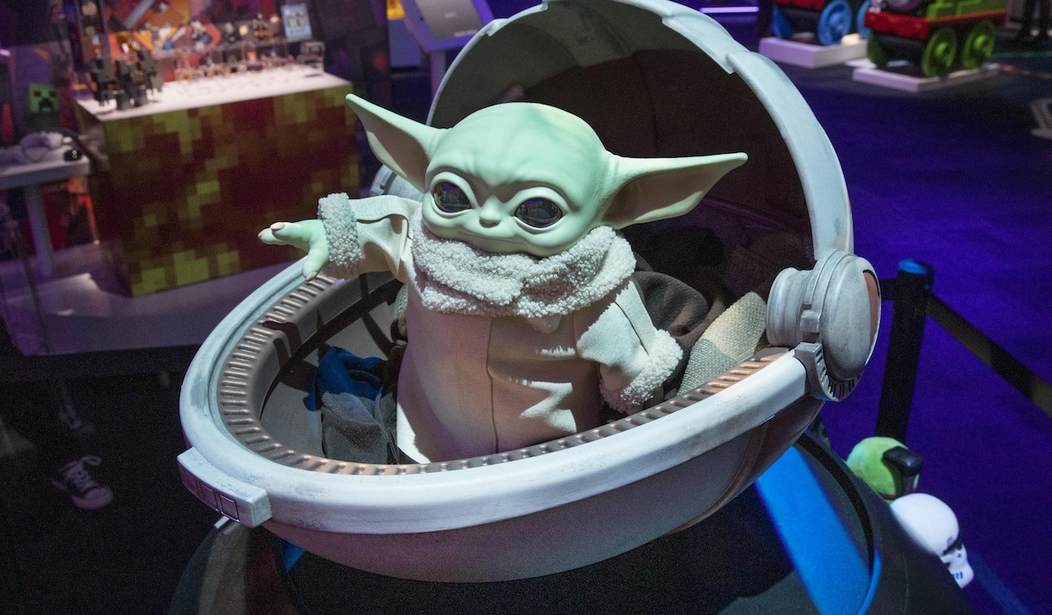As the saying goes, you’ve gotta start ’em young.
That’s an adage clearly embraced by KinderCare.
The Portland-based childcare chain has a message to parents about their would-be inequitable infants.
On its website, the company dedicates a page to “diversity, equity and inclusion.”
“Your child belongs in our circle,” it says.
And that sphere — which welcomes every “sexual identity” and “family structure” — is one of social justice.
“What does DEI mean for kids in our classrooms and centers?” the site asks.
Respecting all kinds of families, and fostering a safe, welcoming community is foundational to who we are. … [W]e’re committed to valuing the experiences and traditions you bring with you and honoring them within our community.
Here’s how it’s done:
- Using classroom materials that reflect diverse identities
- Creating accessible and equitable spaces, made possible with the support of our Inclusion Services team
- Providing support and other accommodations for children with varying needs and abilities
- Connecting holidays and observances to our curriculum so we can learn about what makes each of us uniquely human!
Perhaps most importantly:
- Providing an anti-bias education that helps children recognize and speak out against unfairness, injustice, and prejudice
But daycare alone can’t fix what’s fractured.
In fact, the preschool proposes, you’ve got work to do.
“Bring DEI education home,” it directs.
A couple of crucial components:
- Introduce the idea of privilege.
- Define the difference between equality and equity.
A featured video hails “culturally responsive teaching.”
One instructor explains that, since she isn’t white, particular things are apparent:
“I recognize — as an educator of color — it is paramount that my children understand a multitude of norms, beliefs and behaviors.”
Due to its emphasis on equity, the program points out ways in which children aren’t the same — not only in terms of race or language, but their planetary position in our unprincipled patriarchy.
[For preschoolers, draw attention to] stereotypes and biases when you see them in media and books (for example, who is and isn’t represented in roles like doctors, lawyers, firefighters, villains, and heroes).
It’s never too early to learn about diversity, equity, and inclusion!
Additionally:
You can open your elementary-schooler’s mind by encouraging them to reflect on their own privilege and areas where they lack privilege to help them better understand other people, perspectives, and cultures.
To that end — and hearkening back to holidays — the school celebrates Indigenous Peoples’ Day:
For Indigenous children, it’s vital to receive education that affirms and reflects their identities, histories, and experiences. For non-Indigenous children, an accurate sense of history is foundational in developing empathy, perspective, and an antiracist worldview.
(A site search for “Columbus Day” turns up zero results.)
As for viewing our world, KinderCare offers the article “Antiracist Kids: How We Teach Little Kids About Diversity, Equity, and Inclusion“:
There’s no doubt: We’re witnessing an historic movement for racial justice in our country. While parents of color have likely been talking about race with their families for some time, conversations about injustice and racism might be new to some white families. But now more than ever, it’s clear that we all need to teach our kids about racism and even more importantly, how to be an antiracist.
“Antiracism” — per UCLA Law Professor Kimberlé Crenshaw — is “the active dismantling of systems, privileges, and everyday practices that reinforce and normalize the contemporary dimensions of white dominance. This, of course, also involves a critical understanding of the history of whiteness in America.”
That seems a bit weighty for tiny tots — especially the Caucasian ones.
Nonetheless, KinderCare contends, “It all starts with acknowledging differences!”
Besides — your spawn may already be a bigot:
In fact, five-year-old children might not understand prejudice or racial bias, but they already mimic similar attitudes about race that are held by the adults in their cultural group.
And how young should you start educating your heirs in antiracism?
According to KinderCare, six weeks sounds about right:
Whether your child is six weeks old or in the sixth grade, they’re ready to learn how to practice empathy, compassion, and understanding. And everything they do — from reading books and making art to even having lunch — can be experienced through an anti-bias lens.
I’d guess your month-and-a-half-old might miss the finer points.
Still, if you can figure a way to hammer it in, the sooner the better:
Babies begin to notice physical differences in others by three months of age. So, take this early opportunity to start small.
Education has certainly changed.
In times past, children were taught their similarities. They learned values such as kindness within the context of togetherness.
Presently, it appears one’s skin color is one’s identity.
And one’s difference determines one’s condition of currency.
For some, there’s a credit; others are saddled with debt.
Between the poop and the drool, it’s going to be tough getting America’s infants to pay up.
But I suppose professionals in Portland are hoping progressive parents will try.
There is one reality on the start-’em-early system’s side: Babies take lots of naps, so there’ll be ample opportunities for them to get woke.
-ALEX
See more content from me:
University Likened Unwoke Halloween Costumes to Rape and Murder
Bill Maher Continues His Anti-Democrat Streak, Wipes the Floor With the Woke Over Words
Forensic Anthropologists Say ‘Cloaked’ Whiteness Soils Science, Cops Care Less About BIPOC Bones
Find all my RedState work here.
Thank you for reading! Please sound off in the Comments section below.













Join the conversation as a VIP Member